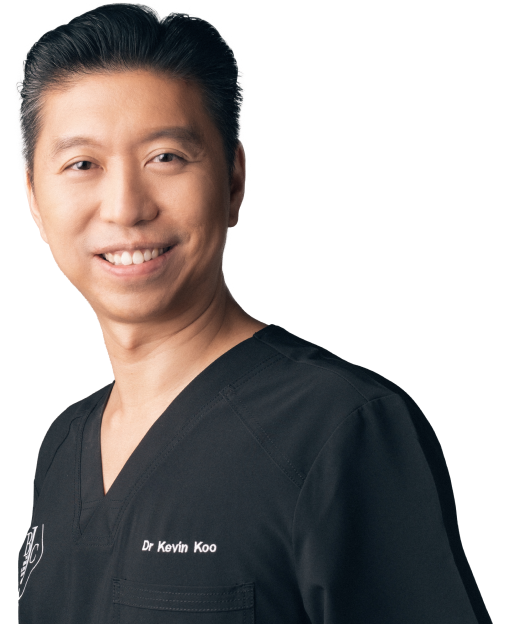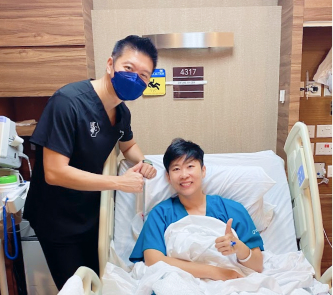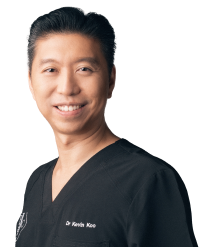Shoulder Arthroscopy

What is a Shoulder Arthroscopy?
Shoulder arthroscopy, also known as keyhole shoulder surgery, is a minimally invasive surgical procedure that uses a specialised instrument known as an arthroscope. Equipped with a small camera, the arthroscope is inserted into the shoulder joint via a small incision, allowing orthopaedic surgeon to view and repair tissues within and surrounding the joint.
What Does the Shoulder Joint Consist of?
The shoulder is the largest ball-and-socket and most mobile joint in the body. Main components of the shoulder include:
- Ball and socket – The shoulder is a ball-and-socket joint composed of three bones: the humerus (upper arm bone), the scapula (shoulder blade), and the clavicle (collarbone). The humerus forms the "ball," which fits into a "socket" known as the glenoid, part of the scapula. Meanwhile, the clavicle connects the shoulder blade to the breastbone.
- Shoulder capsule – This refers to a group of ligaments surrounding the shoulder joint, connecting the "ball" of the humerus to the glenoid socket. This network of ligaments provides stability and a range of motion to the shoulder joint.
- Rotator cuff – Comprising four muscles, the rotator cuff encapsulates the head of the humerus, attaching it to the shoulder blade. This key structure enables the lifting and rotation of the arm.
What Injuries Can Arthroscopic Shoulder Surgery Treat?
Arthroscopic shoulder surgery can diagnose and treat a variety of shoulder injuries, including:
- Shoulder bursitis – Characterised by inflammation of the bursa—the cushioning pad situated between the bones and the shoulder joint—this condition can cause pain, discomfort, swelling, and redness.
- Arthritis – Arthritis in the shoulder occurs when inflammation arises in the shoulder joint, leading to pain, stiffness, and restricted movement. This condition is often related to the gradual wear and tear of cartilage in the joint.
- Shoulder tendonitis – Tendonitis in the shoulder results from overuse of the shoulder tendons, often due to intense physical activities or repetitive movements. This condition can cause pain and limit shoulder mobility.
- Shoulder impingement – This condition occurs when the shoulder's tendons rub or impinge on the shoulder bones, causing irritation and discomfort. It is commonly seen in individuals who engage in activities that involve a lot of lifting, swimming, or other sports movements.
- Rotator cuff tears – This is where one or more of the tendons in the muscles and tendons surrounding the shoulder joint (rotator cuff) become damaged or torn, resulting in pain, weakness, and limited range of motion.
- Frozen shoulder – This condition is usually caused by the inflammation of the tissues surrounding the joint, forming scars called adhesions that restrict movement. A frozen shoulder is characterised by stiffness and pain in the shoulder joint, limiting its range of motion.
- Labral tears or SLAP tears – These are injuries to the cartilage ring (labrum) surrounding the shoulder's socket, typically due to trauma, repetitive movements, or overuse. Labral tears may cause shoulder pain, instability, and, sometimes, a locking feeling when moving the shoulder.
- Shoulder instability or dislocation – When the upper arm bone slips out of the shoulder socket, it causes instability or even a dislocation, which can lead to recurring dislocations if not properly treated.
- Calcific tendonitis – This involves calcium deposits forming within the tendons of the rotator cuff, causing pain and limiting movement.
What Happens Before a Shoulder Arthroscopy?
Prior to the procedure, patients are required to share their full medical history and list of current medications with their doctor. This allows the doctor to provide guidance on potential adjustments to medication regimens prior to surgery. The doctor will also evaluate the patient to see if he or she is eligible for shoulder surgery.
What Happens During a Shoulder Arthroscopy?
On the day of the surgery, the patient will be positioned either seated or on their side. General anaesthesia is administered to ensure the patient's comfort during the procedure. Afterwards, the shoulder surgeon makes a small incision to insert the arthroscope. Images from the arthroscope's camera are displayed on a monitor in real time, assisting the surgeon in identifying and locating the issue within the shoulder. To repair or remove any damaged tissue, another small incision is made to accommodate specialised tiny surgical instruments. Once the objectives of the diagnostic test and shoulder treatment have been achieved, the incisions are closed using small stitches or adhesive bandages.
What Happens After a Shoulder Arthroscopy?
- Monitoring and discharge – After the completion of the procedure, patients are moved to a recovery room for close monitoring until the effects of the anaesthesia have worn off. The patient will then be evaluated for possible discharge.
- Home care instructions – Patients will receive instructions regarding proper wound care, signs of infection to look out for (like redness, increased pain, or purulent discharge), and activity guidelines.
- Follow-up appointments – Scheduled follow-up appointments are crucial for assessing the patient’s healing, removing sutures if necessary, and modifying the recovery plan as needed.
- Pain management – To manage post-operative discomfort, pain medications may be prescribed. It is important to use these medications as directed by the doctor.
- Sling use – Patients are generally advised to wear a sling for approximately one week after surgery. This helps to protect the shoulder joint, limit movement, and aid in the healing process.
- Temporary swelling – Post-surgical swelling in the shoulder, arm, and hand is common but should gradually decrease over time. Applying an ice pack appropriately can help to reduce swelling and offer pain relief.
If you are experiencing persistent shoulder pain, seek medical care at our shoulder treatment clinic at 9898 7781 today. The Bone and Joint Centre specialises in the treatment of all orthopaedic conditions affecting the shoulder, as well as the foot and ankle, knee, spine and hip, and elbow, hand, and wrist.
Our Shoulder Surgeon in Singapore
FRCSEd (Orth), FAMS
Dr Kevin Koo is a shoulder surgeon in Singapore with expertise in shoulder arthroscopy, a minimally invasive technique used to diagnose and treat various shoulder conditions. With over 20 years of experience, he has successfully treated patients with rotator cuff tears, shoulder impingement, and labral injuries. Dr Koo's personalised approach ensures optimal recovery and pain relief for his patients.
His commitment to excellence extends to both his clinical practice and his role in education as he serves as an Adjunct Assistant Professor at NUS Yong Loo Lin School of Medicine and Duke-NUS Medical School.



| Tel. | : +65 6970 5905 |
| Fax | : +65 6970 5906 |
| Mobile | : +65 9898 7781 |
| : hello@bjc.sg , drkevinkoo@bjc.sg |
| Mon - FriMonday to Friday | :8:30am to 5:30pm |
| Sat, Sun and PHSaturday, Sunday & PH | :Closed |
Well-being: Our Focus at
The Bone & Joint Centre.
get in touch as soon as possible.
| Tel. | : +65 6970 5905 |
| Fax | : +65 6970 5906 |
| Mobile | : +65 9898 7781 |
| : hello@bjc.sg , drkevinkoo@bjc.sg |
| Mon - FriMonday to Friday | :8:30am to 5:30pm |
| Sat, Sun and PHSaturday, Sunday & PH | :Closed |





